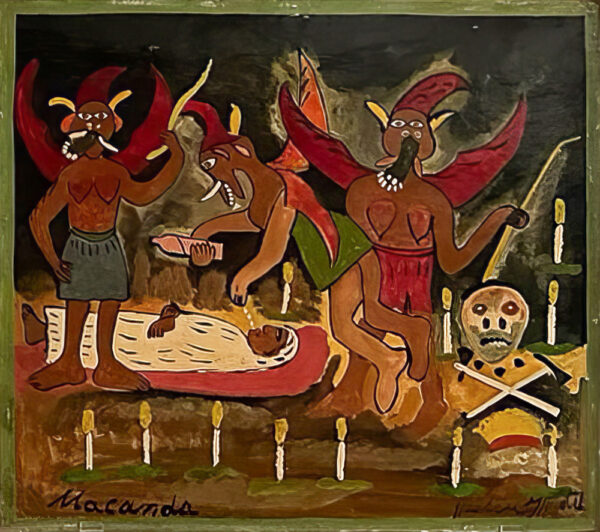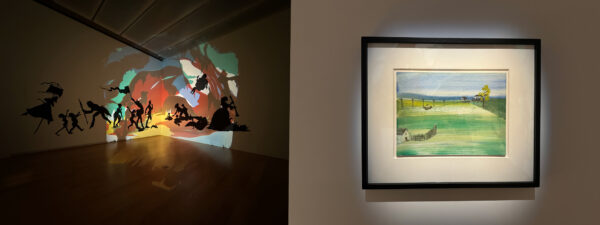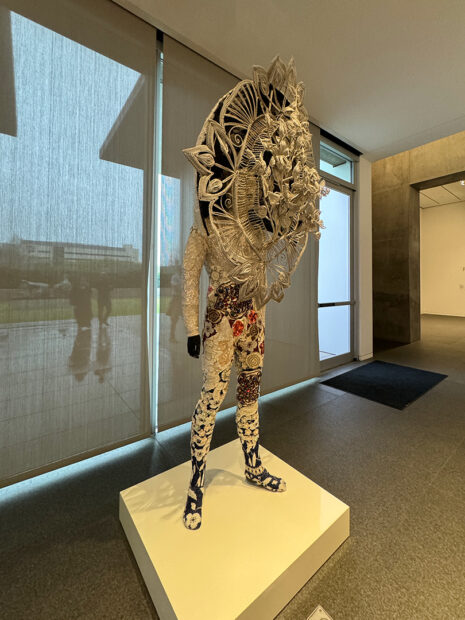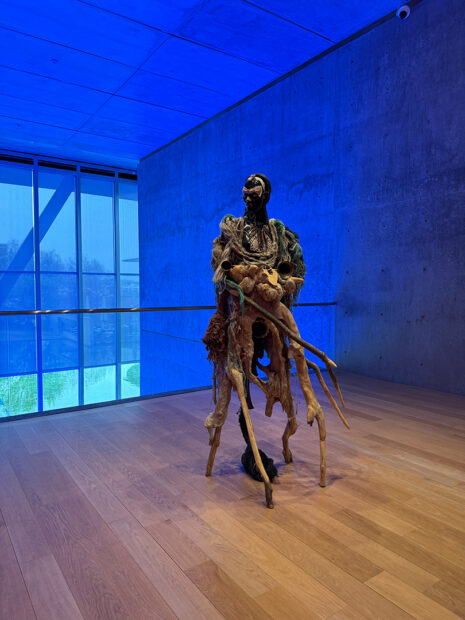What is Surrealism? Even those outside the art world have some inkling of what this word/phrase/movement encompasses, in part because it has been intrinsically linked to Salvador Dali. The word conjures images of melting clocks, marching ants, figures with dresser drawers opening from their bodies, and desolate landscapes. Visually, many people might identify Surrealism as dream-like imagery painted in a realistic style, however, the heart of the movement was more than that.
I am not an expert on Surrealism; as an art educator (not art historian) who has worked in schools, museums, and higher education, my art history knowledge is wide but not always deep. But, as a life-long learner, when I find myself faced with questions about art, I am more than happy to dive in a bit deeper. In 1924, two surrealist groups, one led by Yvan Goll and the other by André Breton, published surrealist manifestos within weeks of each other. Breton’s concept of surrealism — a counter-action to the apathy of the Dada movement, a rejection of rational thought as a way to overthrow oppressive societal rules and norms, a call for the liberation of one’s imagination — would ultimately win out. Goll’s vision of surrealism was grounded in reality and called out Breton’s ideas, saying the “‘psychic mechanism based on the dream and the random play of thought’ will never have the power to destroy our physical organism, which teaches us that reality is always right, that life is truer than thought.”
I suppose it is not surprising that two opposing views were trying to grasp at the same term. But, for the sake of answering the question What is Surrealism?, history stands with Breton. And just as this story of the beginnings of surrealism has flown under my radar for quite some time, so has the awareness of a surrealist dialogue happening between the Caribbean and Europe. I was unaware that Breton was invited to speak to writers and artists in Haiti in 1945. This global sharing of ideas makes sense, especially as the genre of magical realism arose in Latin America in the 1940s. Though the underpinnings of the movement date back over 100 years, with its origin often noted as the late 1910s, curator María Elena Ortiz tells a broader story of the concept of surrealism in the exhibition Surrealism and Us: Caribbean and African Diasporic Artists since 1940 at the Modern Art Museum of Fort Worth.
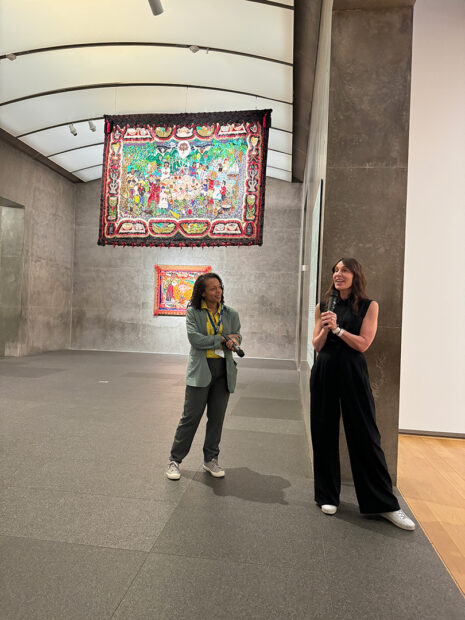
María Elena Ortiz and Andrea Karnes introducing the “Surrealism and Us” exhibition at the Modern Art Museum of Fort Worth.
During a tour of the show, Ortiz opened with the statement that one of the most surreal actions in history might be the start of the Haitian Revolution in 1791, when a group of enslaved people rose up against French colonial rule, making it the first country to be founded by former slaves. She pointed to the idea that a trance during a Vodou ritual inspired the act, and even the revolutionaries’ thinking outside of the societal constraints that bound them, was in itself a surrealist act. Imaginative thinking as a way to reconsider one’s place in the world and break from oppressive regimes is a main throughline of the exhibition. Ortiz brings together works by Caribbean and Black artists at the intersection of Caribbean aesthetics, Afrofuturism, and Afrosurrealism.
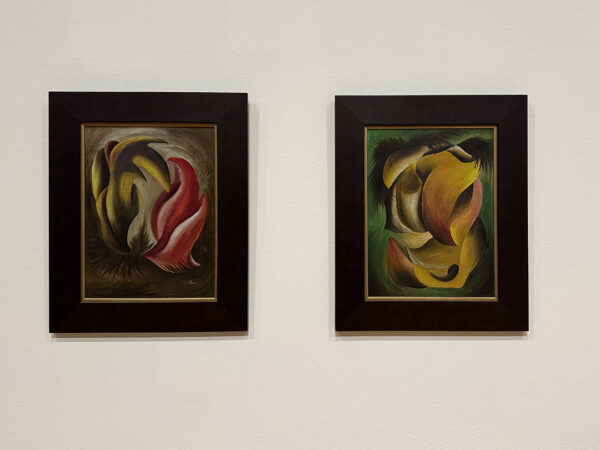
Cossette Zeno, “Rubén,” 1952 and “Ní hablar del peluquín (No Use to Talk about the Little Wig),” 1952.
While Surrealism and Us is not necessarily organized chronologically, the first main gallery holds some of the earliest works in the exhibition. Many of the pieces in this section were ones I had never seen or by artists I had never heard of, but clearly fit into a global conversation. Cossette Zeno’s Ni hablar del peluquín (No Use to Talk about the Little Wig), featuring peach-colored amorphous forms with tufts of hair, brought to mind Meret Oppenheim’s fur-covered teacup. The at once angular and organic forms of Rafael Ferrer’s Figura and Luis Maisonet Crespo’s Pas de Deux (Amanecer) felt reminiscent of Joan Miro’s sculptures and prints. And the imagery of works like Hector Hyppolite’s Macanda, which features a figure laying surrounded by candles with mystical creatures attending to them, reminded me of Mexican and Peruvian ex-votos and retablos, which often depict people who have recovered from an illness.
I felt an unease about considering these works in relation to the more traditional art canon. Was the act of connecting the pieces taking away from the originality of the work in the exhibition? Was I struggling to break free of the restraints of my own education and experience? Or, is this a perfectly valid thing that we all do? As a part of learning, do we all necessarily connect the new things that we see to what is familiar and known? I think the latter is true, though it is still important to be aware of this tendency, especially in regards to exploring pieces by Black and other historically marginalized artists.
Walking into the next sections and seeing works by artists like Emory Douglas, Ana Mendieta, Kerry James Marshall, Kara Walker, and Nick Cave, I wondered how these artists might feel about their work being considered surrealist. In particular, I thought about Frida Kahlo, who is not in the show but adamantly rejected the label. She is quoted as saying, “Some critics have tried to classify me as a surrealist; but I do not consider myself a surrealist… I detest surrealism. To me it seems a manifestation of bourgeois art… I never painted dreams. I painted my own reality.”
I spoke with Ortiz about this and asked how she thought through some of these potential conflicts. She noted that similar sentiments were in the air in Cuba and Haiti, both of which had their own terms, such as le réalisme merveilleux. Ortiz also explained, “Of course we’re always going to be negotiating our relationship to this Western colonialism or Western influence, and we’re always going to be negotiating the questions, ‘Do we want to assimilate? Are we just passive people that are really colonized or are we active agents who are naming ourselves?’”
Ortiz went on to say, “I am using the [term] surreal because I am speaking about a worldwide conversation. I like thinking about how Breton did not end up in Martinique by coincidence. The colonial relationships that happened in America also affected the West… It is important for all of us to think about how we are impacting each other.”
I appreciate Ortiz’s take on this and her organization of the exhibition as a way to consider works by contemporary artists through a new lens. Throughout Surrealism and Us Ortiz has taken numerous opportunities to create small vignettes that give individual artists’ work a space to stand alone and shine in a way that more traditional gallery installations do not. The first of these was a room created with temporary walls featuring an installation of a large projection and small framed painting by Kara Walker, paired with Toni Morrison’s Five Poems, which was a collaboration featuring works by Walker. I recalled the first time I saw Walker’s work in person: it was a retrospective, titled My Complement, My Enemy, My Oppressor, My Love, at the Modern in 2008, which was radical for that time in Fort Worth (a conservative city in a conservative state). Walker’s work was necessarily jarring. I was struck that silhouettes, shadows could have such a striking effect.
Darkytown Rebellion was powerful the first time I saw it, but shown amongst a full exhibition of similar narratives and visuals, the specifics of it were lost in my memory. Revisiting the work in Surrealism and Us, I immediately thought of the Haitian revolution that Ortiz mentioned prior to my walking into the exhibition. I wasn’t as caught up in the violence of the work as I was before (though that is an inescapable feeling), rather, I considered the idea of liberation — the harsh realities of what it takes to be willing to risk everything for a chance at real freedom. The projection aspect was particularly powerful as I stood against a wall of the room and watched other visitors walk in front of the light, their shadows being cast alongside the brutal scene. I thought about what Ortiz said, how we impact each other, and considered how we are all a part of a longer history whose effects ripple throughout our society today.
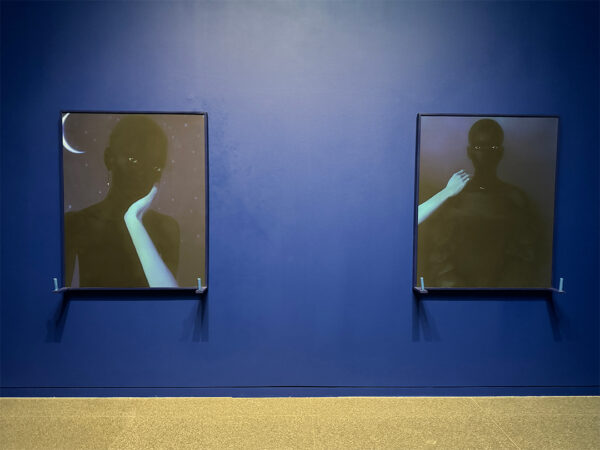
Elliot & Erick Jiménez, “Blue Chapel (Interdependence and Advocacy),” 2022, archival photo prints on canvas in artists’ custom frames.
Another significant space in the exhibition is an installation by brothers and artistic duo Elliot and Erick Jimenéz. Their haunting photographs feature a Black figure with piercing eyes that peer directly at the viewer, and a pale arm of an otherwise off-camera figure that reaches into the scene. These four images, all with a deep blue tone, are printed on canvas and hung in a blue room. Each custom-built frame includes a thin shelf that holds two blue candles. The brothers refer to the subjects in the images as “shadow figures that represent Afro-Cuban deities,” and there is an otherworldly quality about the work that is arresting and peaceful. The title of the work hints at layers of interaction and coming to terms with a complicated relationship, the act of moving beyond acceptance and toward interdependence. Again, the idea emerges of how two seemingly adverse entities can, and perhaps must, come together because of the interconnectedness of all things.
Other visually striking vignettes include alcoves for Nick Cave’s Soundsuit and Zak Ové’s La Jabless. Though I’ve known that Cave’s soundsuits were first created in response to the 1991 beating of Rodney King by Los Angeles police officers, I had always thought of the works solely in the realm of performance art — beautiful pieces that often come alive through activation and function as shields that conceal a person’s identity. I had never considered these pieces as surrealist works, which in light of this exhibition felt like an obvious omission considering the movement’s history of performing arts. In addition to the visual surreal-ness of the soundsuits is the deeper connection to fantastical, imaginative thinking as a way of countering oppression. Similarly, rather than a wearable item, Ove, an artist with whom I was previously unfamiliar, has created a mystical figure. Constructed of driftwood, ropes, shells, and other items, La Jabless appears to be born from the sea and has a regal presence. Situated on a landing above Jenny Holzer’s Kind of Blue, a piece from the museum’s permanent collection, the sculpture is bathed in blue light, which puts it in conversation with the Jimenéz brothers’ installation.
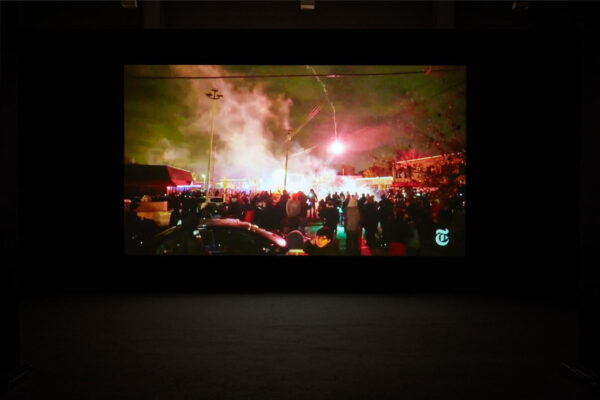
Arthur Jafa, “Love is the Message, The Message is Death,” 2016, single-channel high-definition digital video, color, sound; 07:25 minutes. Smithsonian American Art Museum, Joint museum purchase with the Hirshhorn Museum and Sculpture Garden, Smithsonian Institution, Washington, D.C. © 2016, Arthur Jafa. Image courtesy of the artist and Gavin Brown’s enterprise, New York / Rome.
Surrealism and Us also features two video works: Arthur Jafa’s Love is the message, the message is Death, and Ja’Tovia Gary’s An Ecstatic Experience. The works were made within a year of each other and both use a collage aesthetic pulling from found videos. I was familiar with Jafa’s 2016 piece, as I had seen it at the Dallas Museum of Art in 2017; it was the first time I cried in front of a work of art. The incredibly powerful piece is a critical look at the experience of Black people in the United States. Though it includes moments of joy and highlights important and successful Black people, it also brings attention to the ways they are viewed and treated by society. In particular it illustrates that in the U.S., Black culture and people are often viewed and valued as entertainment while simultaneously dehumanizing them to commit and/or justify violence against them. The combining of these various scenes, juxtaposed with videos of the sun and set to Kanye West’s Ultralight Beam, underscores the reality in what could feel surreal or otherworldly to people who do not actively experience or consider the realities of Black life in the U.S.
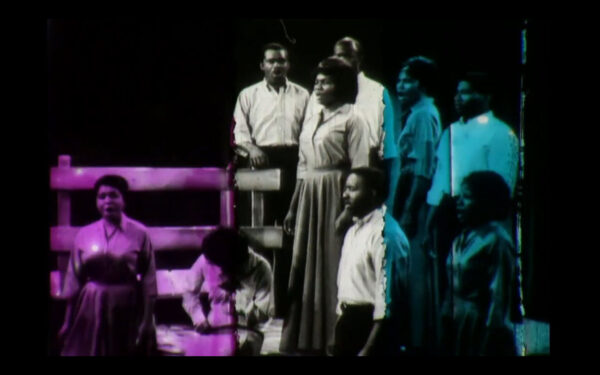
Ja’Tovia Gary, “An Ecstatic Experience,” 2015, video, color, sound, 6 min. Whitney Museum of American Art, New York; purchase, with funds from Anne and Joel Ehrenkranz.
Gary’s 2015 video work is near the end of the exhibition. Like Jafa’s piece, it uses found footage, but Gary adds to the work by altering the footage with simple animated additions to each frame. The film combines scenes from a performance by Ruby Dee, who plays a woman recounting her mother’s self-liberation from enslavement, with an interview with Assata Shakur, and videos from Black Lives Matter protests in Baltimore. An Ecstatic Experience ties together a history of resilience and uprising, adding perspective to the BLM protests, which received so much backlash at the time.
Reflecting on the exhibition now, after having seen it three times over the past two months, my mind goes back to my first question: “What is surrealism?” But, I think the more important question that perhaps was there all along and that Surrealism and Us frames is, “Why is surrealism still relevant today?” The title of the exhibition comes from Suzanne Césaire’s 1943 essay Surrealism and Us, which outlines the reach of the movement twenty years after the publication of Breton’s manifesto and calls for a Martinican Surrealism to revolutionize Black art and culture. That same year, Martinique was one of the last French colonies to defect from the government of Nazi-occupied France and join the Free France movement.
As the political climate in the U.S. continues to fracture, I find myself wondering how we will ever get out of the mess(es) we are in; I struggle to envision a path forward. Surrealism and Us is incredibly timely and the show as a whole, like Gary’s video, reminds me of the long history and struggle for liberation. Simultaneously, the show provides inspiration that we can and must move into a new unimaginable future, arguing that perhaps it will be the artists and writers who help the rest of society visualize and realize the road ahead.
Surrealism and Us: Caribbean and African Diasporic Artists Since 1940 is on view at the Modern Art Museum of Fort Worth through July 28, 2024.


